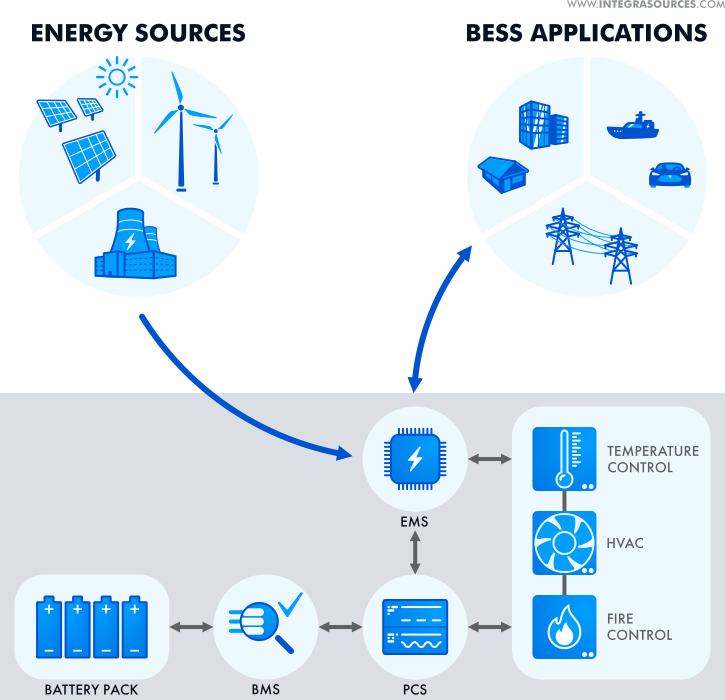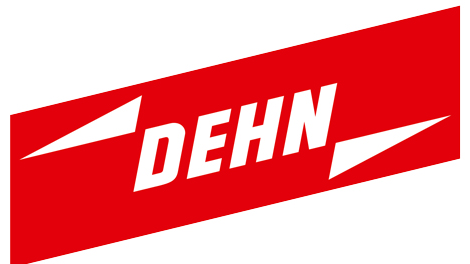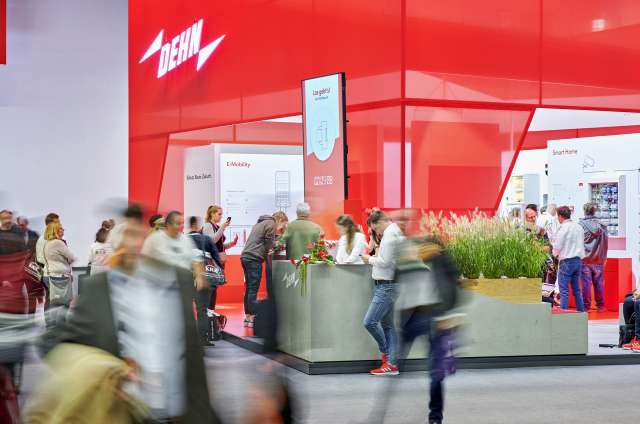DEHN at Light + Building 2024: Protection – Space – Future
More frequent extreme weather events and increasingly interconnected electronic devices pose a greater risk of damage due to lightning strikes and surges.
Appropriate protective measures in compliance with current standards and regulations are required to protect people, buildings, systems, as well as modern energy generation and storage. From 3 to 8 March 2024, DEHN can be found at stand B90 in hall 12.0 where it will be presenting solutions for the new DIN 18014 as well as technologies and products for electrical engineering, home and building automation and safety technology. DEHN will be showcasing protection solutions for industry, PV systems and residential buildings, including refurbishment, renovation and modernisation.
“One of the key challenges in the coming years will be making buildings and systems more efficient and future-proof” says Boris Wolff, CSO of DEHN SE. “The expansion of renewable energies and their infrastructures will play a crucial role here. The importance of PV systems, energy storage and control as well as system integration as part of building technology is therefore increasing. In this context, solutions and products for lightning and surge protection, and safety equipment are essential when it comes to availability, protection of systems and installations and the safety of operating and maintenance personnel.”
Light + Building is the world’s leading trade fair for lighting and building technology. One focus is on modern electrical installations which are not only convenient, efficient and safe, but also meet the requirements of climate protection and the energy transition. A vital aspect of modern electrical installations is lightning and surge protection.
New technologies, such as ACI (Advanced Circuit Interruption), set the course for the future. Renewable energy generation is creating new grid parameters: island networks or storage systems are changing the short-circuit conditions. This is one issue that the new ACI technology already has under control.
The advancement of construction technology is ongoing. This means that earth-termination systems, an essential part of any electrical installation, must also be updated and adapted. This development is reflected in the revised DIN 18014 standard and DEHN will be presenting relevant products, protection solutions and services at the trade fair.
In cooperation with other companies in the ZVEI (Electro and Digital Industry Association), DEHN will be demonstrating how a Digital Product Passport (DPP) can help achieve transparency, reduce CO2, and increase competitiveness.
You will find DEHN at stand B90 in hall 12.0.
SourceDEHN
EMR Analysis
More information on DEHN: See the full profile on EMR Executive Services
More information on Dr. Philipp Dehn (Chairman of the Board & CEO, DEHN SE + Acting CSO, DEHN SE + Chairman, ZVEI): See the full profile on EMR Executive Services
More information on Boris Wolff (Chief Sales Officer, DEHN SE): See the full profile on EMR Executive Services
More information on DEHNguard ACI (Advanced Circuit Interruption) by DEHN: https://www.dehn-usa.com/sites/default/files/media/files/DS297-E.pdf + https://www.dehn-international.com/store/p/en-DE/F2782861/dehnguard-modular-with-advanced-circuit-interruption-safe-dimensioning- + The new ACI technology – Advanced Circuit Interruption – stands for the highest level of device safety and system availability. With its new integrated switch / spark gap combination, ACI technology has current and future requirements well under control: Making sure surge protective devices function reliably and systems are always available.
More information on Light+Building 2024 (3-8 March 2024, Frankfurt, Germany): https://light-building.messefrankfurt.com/frankfurt/en.html + The international meeting place for the lighting and building services technology sector will open again in 2024 on the usual date from 3 to 8 March at the Exhibition Grounds in Frankfurt am Main. The focus will be on lighting trends in all their facets, the electrification and digitalisation of home and building service technology and connected security technology.
Light + Building underlines the central importance of electrification with the claim “Be electrified”. At the international meeting place for the sector, the focus is on technical innovations to move forward on the path to a sustainable future.
More information on Wolfgang Marzin (President and Chief Executive Officer, Messe Frankfurt): https://www.messefrankfurt.com/frankfurt/en/company/management.html
More information on Johannes Möller (Director Light+Building, Messe Frankfurt): https://www.linkedin.com/in/johannes-m%C3%B6ller-7a48901b0/
More information on The German Institute for Standardization – Deutsche Institut fur Normung (DIN): https://www.din.de/en + DIN and its subsidiaries provide comprehensive services for national, European and international standards work. We offer our customers a global network and over 100 years’ experience.
DIN Standards are the results of work at national, European and/or international level. Anyone can submit a proposal for a new standard. Once accepted, the standards project is carried out according to set rules of procedure by the relevant DIN Standards Committee, the relevant Technical Committee of the European standards organization CEN (CENELEC for electrotechnical standards) or the relevant committee at the international standards organization ISO (IEC for electrotechnical projects).
All stakeholders can participate in this work, including manufacturers, consumers, businesses, research institutes, public authorities and testing bodies. They send experts to represent their interests within DIN’s working bodies, which are overseen by some 70 standards committees, each of which is responsible for a specific subject area. For work at European and international level, the DIN standards committees send experts to represent German interests within CEN and ISO, respectively. DIN staff members coordinate the standardization process and are responsible for overall project management, ensuring the uniformity and consistency of the German standards collection.
Standards are developed with full consensus, that is, they are developed by experts with the aim of arriving at a common standpoint, taking the state of the art into consideration.
DIN Standards are reviewed at least every five years. If a standard no longer reflects the current state of technology, it is either revised or withdrawn.
Standard DIN Rails are available in 35mm (7.5 and 15mm deep), 32mm and 15mm widths and are supplied in 1 m (3’3″) and 2 m (6’6”) lengths.
More information on ZVEI: See the full profile on EMR Executive Services
More information on Wolfgang Weber (Chairman of the Executive Board, ZVEI): See the full profile on EMR Executive Services
More information on Dr. Gunther Kegel (President, ZVEI): See the full profile on EMR Executive Services
More information on Ecodesign for Sustainable Product Regulation (ESPR): https://commission.europa.eu/energy-climate-change-environment/standards-tools-and-labels/products-labelling-rules-and-requirements/sustainable-products/ecodesign-sustainable-products_en + The Ecodesign for Sustainable Products Regulation (ESPR) is an ambitious EU initiative to make sustainable products the norm in the EU and boost Europe’s resource independence. It is rooted primarily in the European Commission’s Circular Economy Action Plan of March 2020, which in turn is based on the European Green Deal of 2019. The Ecodesign for Sustainable Products Regulation establishes a framework to improve the environmental sustainability of products and to ensure free movement in the internal market by setting ecodesign requirements that products shall fulfil to be placed on the market or put into service.
The main objectives of this regulation are to reduce the negative life cycle environmental impacts of products and improve the functioning of the internal market. In addition to contributing to the objectives of EU industrial policy to boost the supply of and demand for sustainable goods, deliver on sustainable production, and ensure a level playing field for products sold on the internal market.
On 30 March 2022 the European Commission has adopted a wide-scope ESPR proposal, including the creation of an EU Digital Product Passport (DPP). It is now with the European Parliament and the Council for adoption in the co-legislative procedure. The year 2023 will be key to finalise the requirements. ESPR could then start applying from 2024.
EMR Additional Notes:
- Surge, Transient and Lightning Protection / Arresters Devices:
- Surge protector also known as Transient Voltage Surge Suppressor (TVSS), Surge Protection Devices (SPD) or Surge Suppression Equipment (SSE) is the equipment designed to protect electrical and electronic equipments from power surges and voltage spikes.
- In general a surge is a transient wave of current, voltage or power in an electric circuit.
- Surge arrester protects the installation from inside while lightning arrester protects the equipment from outside.
- Surge arrester protects the system from lightning, switching, electrical faults, and other transients voltage and surges while lightning arrester is mainly used for lightning strikes and associated surges.
- Energy Storage System (ESS):
- An energy storage system, often abbreviated as ESS, is a device or group of devices assembled together, capable of storing energy in order to supply electrical energy at a later time. Battery ESS are the most common type of new installation and are the focus of our free fact sheet.
- Battery Energy Storage System (BESS):
- A BESS is an energy storage system (ESS) that captures energy from different sources, accumulates this energy, and stores it in rechargeable batteries for later use.

- Grid, Microgrids and DERs:
- The power grid is a network for delivering electricity to consumers. The power grid includes generator stations, transmission lines and towers, and individual consumer distribution lines.
- The grid constantly balances the supply and demand for the energy that powers everything from industry to household appliances.
- Electric grids perform three major functions: power generation, transmission, and distribution.
- A microgrid is a small-scale power grid that can operate independently or collaboratively with other small power grids. The practice of using microgrids is known as distributed, dispersed, decentralized, district or embedded energy production.
- Smart Grid is any electrical grid + IT at all levels . Micro Grid is a group of interconnected loads and DERs (Distributed energy resources) within a clearly defined electrical and geographical boundaries witch acts as a single controllable entity with respect to the main grid.
- Distributed energy resources (DERs) are small-scale electricity supply (typically in the range of 3 kW to 50 MW) or demand resources that are interconnected to the electric grid. They are power generation resources and are usually located close to load centers, and can be used individually or in aggregate to provide value to the grid.
- Common examples of DERs include rooftop solar PV units, natural gas turbines, microturbines, wind turbines, biomass generators, fuel cells, tri-generation units, battery storage, electric vehicles (EV) and EV chargers, and demand response applications.
- Distributed energy resources management systems (DERMS) are platforms which helps mostly distribution system operators (DSO) manage their grids that are mainly based on distributed energy resources (DER).
- DERMS are used by utilities and other energy companies to aggregate a large energy load for participation in the demand response market. DERMS can be defined in many ways, depending on the use case and underlying energy asset.
- Digital Product Passport (DPP):
- A Digital Product Passport (DPP) is a structured collection of product related data with pre- defined scope and agreed data management and access rights conveyed through a unique identifier and that is accessible via electronic means through a data carrier.
- The DPP will store instructions and protocols for numerous operations such as disassembly and recycling, end-of-life and disposal, along with procedures on how to repair, refurbish, upgrade or reuse the product.
- Carbon Dioxide (CO2):
- Primary greenhouse gas emitted through human activities. Carbon dioxide enters the atmosphere through burning fossil fuels (coal, natural gas, and oil), solid waste, trees and other biological materials, and also as a result of certain chemical reactions (e.g., manufacture of cement). Carbon dioxide is removed from the atmosphere (or “sequestered”) when it is absorbed by plants as part of the biological carbon cycle.
- Biogenic Carbon Dioxide (CO2):
- Carbon Dioxide released as a result of the combustion or decomposition of organic material, that is biomass and its derivatives. Examples include carbon dioxide released during the combustion of wood and biogas generated by decomposition.
- Biogenic Carbon Dioxide (CO2) and Carbon Dioxide (CO2) are the same. Scientists differentiate between biogenic carbon (that which is absorbed, stored and emitted by organic matter like soil, trees, plants and grasses) and non-biogenic carbon (that found in all other sources, most notably in fossil fuels like oil, coal and gas).
- Carbon Capture and Storage (CCS):
- CCS involves the capture of carbon dioxide (CO2) emissions from industrial processes, such as steel and cement production, or from the burning of fossil fuels in power generation. This carbon is then transported from where it was produced, via ship or in a pipeline, and stored deep underground in geological formations.
- CCS projects typically target 90 percent efficiency, meaning that 90 percent of the carbon dioxide from the power plant will be captured and stored.
- Decarbonization:
- Reduction of carbon dioxide emissions through the use of low carbon power sources, achieving a lower output of greenhouse gasses into the atmosphere.
- Carbon Footprint:
- There is no universally agreed definition of what a carbon footprint is. A carbon footprint is generally understood to be the total amount of greenhouse gas (GHG) emissions that are directly or indirectly caused by an individual, organization, product, or service. These emissions are typically measured in tonnes of carbon dioxide equivalent (CO2e).
- In 2009, the Greenhouse Gas Protocol (GHG Protocol) published a standard for calculating and reporting corporate carbon footprints. This standard is widely accepted by businesses and other organizations around the world. The GHG Protocol defines a carbon footprint as “the total set of greenhouse gas emissions caused by an organization, directly and indirectly, through its own operations and the value chain.”


